The popularity of Digital PR has grown heavily during the last few years, as brands look at other impactful ways to grow their coverage on the web.
Many brands have been busy utilising the power of digital PR to not only generate valuable links that point back to key pages on their website, but they’ve also utilised it to grow brand awareness with key target audiences.
One sector in particular which can really stand to benefit from and utilise the power of digital PR is that of the non-profit charity sector.
In this piece I wanted to explore how, and perhaps more importantly why digital PR can be utilised by charities, as well as asking other experienced consultants about their favourite campaigns.
This article is a guest contribution from SEO Consultant Matt Tutt.
What is Digital PR?
Digital PR is a marketing strategy that helps a brand enhance its online visibility. It typically involves a campaign led by a marketing consultant or agency, designed to showcase the brand in a positive and memorable way.
Most successful digital PR campaigns will result in lots of media coverage, including news stories, strong social media engagement, and usually links that will point back to the brand’s website – which can help to boost their SEO.
While the primary goal of digital PR is to secure coverage where the target audience is most active, the ultimate objective is to drive revenue – either through increased brand recognition or direct online sales, depending on the business. For charities this goal might not be tied to growing revenue, but instead to growing awareness of the causes they’re championing.
Some companies also invest in digital PR specifically to boost their SEO, leveraging the links generated through these campaigns. In industries where traditional link-building methods (like content creation and outreach) are challenging, digital PR offers an effective alternative.
How Can Charities Benefit From Digital PR? Will It Work for All Charities?
Nonprofits often have different objectives than traditional businesses. Their purpose might include raising awareness or educating the public about a particular issue.
For example, charities in the health sector may focus on spreading awareness about a specific health problem and educating the public. And they will also likely aim to generate donations to fund research and sustain their operations.
So for a charity, the overall objective behind investing in digital PR might vary a lot in comparison to a traditional business, which would have likely been solely revenue focused.
Understanding the main objective of the nonprofit is therefore key before you go down the avenue of exploring digital PR as a worthwhile marketing opportunity.
It’s worth noting that for the bigger, established charities and nonprofits, it’s unlikely that they would carry out a digital PR campaign with the main goal of improving their SEO performance – for them it will likely be to raise further awareness of their cause, and to generate more online support.
The Best Charity Digital PR Campaigns – Favourites Chosen By Other PR Consultants
I reached out to several experienced digital PR consultants to find out what their favourite charity PR campaigns were – and have listed these below.

The Dangers of E-Bike Batteries by Electrical Safety First – via Jo O’Reilly
I think Digital PR can sometimes be seen as the less worthwhile cousin to Traditional PR, so when I see really good Digital PR that can compete with Traditional PR in terms of message, narrative, and execution, I am always super impressed.
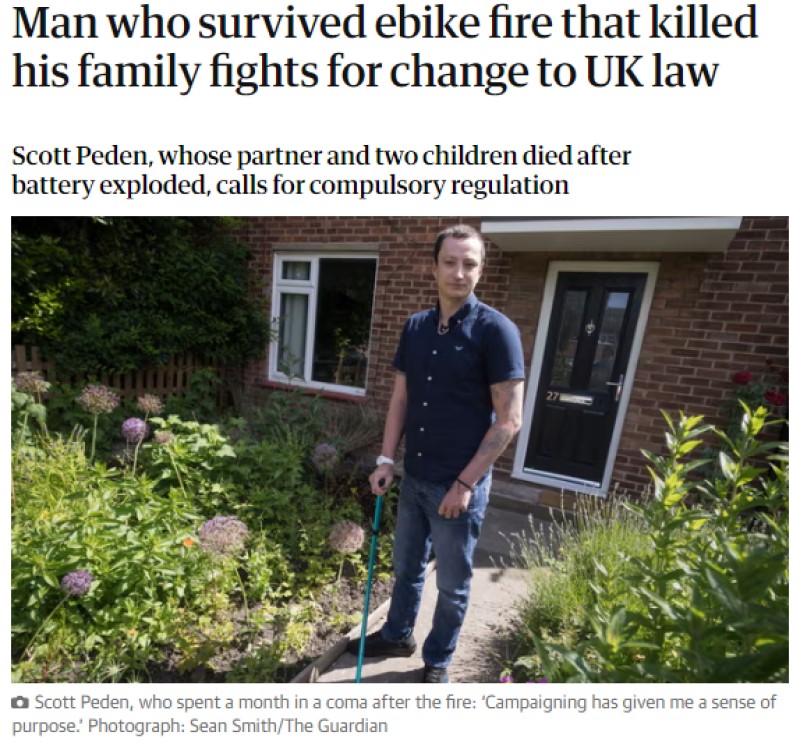
One of the best examples recently is a campaign by Electrical Safety First around the dangers of e-bike batteries in the UK. Not only have they landed coverage and links galore, but they have also handled an incredibly serious story with the gravity it deserves, working with case studies to tell tragic stories sensitively and help to push for a change in policy to ensure that e-bike battery fires don’t impact more families.
Shared by Freelance Digital PR specialist Jo O’Reilly

Population by Pixel by WWF Japan – via Hannah Smith
WWF Japan – Population by Pixel is a print campaign that dates back to 2008. The agency (HAKUHODO C&D) used pixelation to represent the number of animals left for a range of endangered species – each pixel represents an animal, so the more endangered a species is, the more pixelated the image appears. I love it because I think it’s a really creative, accessible, and impactful use of data visualisation. Numbers are notoriously tricky for people to get their heads around, but this campaign makes the intangible, tangible. I think it’s brilliant.
![]()
My advice to charities would be much the same as the advice I’d give to any client – you can’t control what a journalist might write, or indeed how they decide to frame your organisation within the context of any given story. As such I’d advise giving careful consideration to what you put out there, and the extent to which it honours your overall vision and mission.
I’d also mention being mindful of which organisations (commercial or otherwise), and which individuals you choose to collaborate or partner with as a charity – do these people and/or organisations really share your values, or are they using you to try to fix their own tarnished reputations? Does the partnership feel congruent? Does it make sense? Consider the potential risks carefully.
Shared by Creative Content Consultant Hannah Smith

“Charities should maintain authenticity by sharing genuine stories and focusing on impact rather than overly promotional content” – Britt Klontz
Charities who plan to run digital PR campaigns should prioritise maintaining authenticity by sharing genuine stories and focusing on impact rather than overly promotional content.
Building a community through meaningful interactions and providing value beyond fundraising appeals is very important when it comes to fostering long-term supporter engagement and loyalty. Be extra mindful of how beneficiaries are conveyed and make sure that the stories and testimonials shared are accurate and verifiable to avoid accusations of misleading information. Content that could be seen as exploitative or disrespectful should be avoided.
Transparency is also crucial, and they need to prioritise clear communication on how donations are used to build trust.
Don’t overlook all digital channels. Make sure you’re producing content tailored to your website, social channels, and email newsletters. This will ensure you’re reaching a wide audience and increase your chances of encouraging support from your community.
Shared by Freelance Digital PR Consultant & Publicist Britt Klontz

Save Our Species by IUCN & Lacoste via Alex Cassidy
In 2018 wildlife charity IUCN Save Our Species partnered with Lacoste to raise awareness for endangered animals by creating a set of limited edition polos.The biggest news hook for this was that only one polo was made for each remaining animal that it represents. At the time, only 67 Javan Rhinos were left in the wild (the good news is there are now 76!), so only 67 Javan Rhino polos were made. Naturally, all the polos sold out in a day, though you can still get some on eBay for hundreds of pounds. The marriage of scarcity of product and scarcity of animals is a perfect example of a charity raising awareness of a worthy cause by piggybacking on a better known brand, enabling both to get a message across on sustainability and environment.
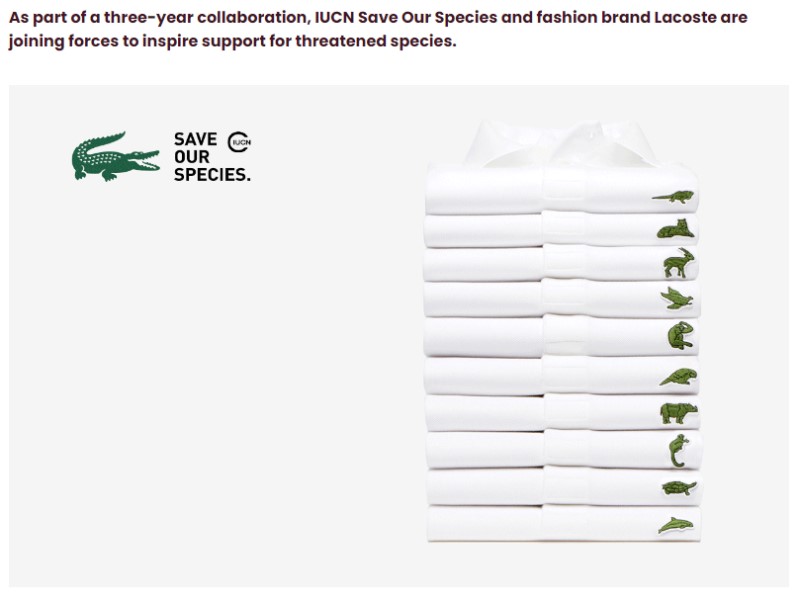
Distinctly work pro bono with a chosen charity every year on their organic and paid strategy, which includes Digital PR. The biggest thing we suggest is to not ignore the linkbuilding element of Digital PR. More often than not we find there is low hanging fruit in existing mentions from local chapters of charities in local press, missing links on databases, and lots of opportunities with councils and universities. Sometimes the tendency is to think big from the outset, when a lot more can be done with much smaller opportunities done thoroughly and at scale.
Shared by Alex Cassidy, Head of Digital PR at Distinctly

He’s Coming Home by Women’s Aid via Amy Irvine
One PR campaign that comes to mind is the Women’s Aid ‘He’s Coming Home’ campaign. This campaign was launched during the World Cup in 2022 and the campaign revealed shocking statistics, including the fact that during major sporting events, domestic abuse rises by up to 38%. I loved this campaign as it was so simple, by changing just one word in the UK’s most famous football chant, the campaign highlighted the darker side of major football tournaments. This multi-channel campaign went viral, appeared on billboards, was featured in a one-shot film, posted across social media and also resulted in widespread coverage by news outlets. Traffic increased on the Women’s Aid website by 78.3%.
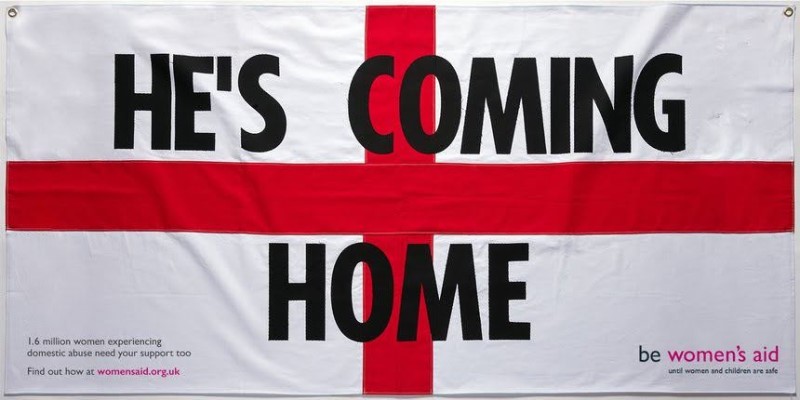
The latest instalment of this campaign was released ahead of this summer’s Euros tournament. Research by Lancaster University showed cases of domestic abuse increased by 38% when England lost a match and 26% when they won or drew. This year the campaign featured classic football scarves with the slogans “No More Years of Hurt”, “He’s Coming Home” and “England Til I Die” to highlight the domestic abuse emergency. Every time England played a game during the Euros, the campaign would be shared across social media, raising crucial awareness so that survivors know where to turn if they need support.
The main goal of this campaign was raising awareness of domestic abuse, and it wasn’t just launched as a digital PR campaign, it was launched across different channels, including OOH, PR and social. However, I do think Women’s Aid missed a trick when it came to digital PR. If they had a dedicated landing page on site with the statistics, video content, and images, they could have earned links directly to this page.
Charities should definitely use digital PR as part of their wider marketing strategy. Through digital PR, charities can increase their organic visibility and brand awareness, build trust and authority, engage with their target audience and increase their reputation.
When charities are getting involved in digital PR, the most important factor they need to be aware of is relevancy. They need to ensure that their ideas are relevant to them as a brand, as this is the biggest level for digital PR success. At Digitaloft, we talk a lot about something called the digital PR sweet spot, and this sits between the content you want to create, which is typically very brand-focused, and the content journalists want to publish.
When launching digital PR activity, it’s also really important to make sure you get your tone of voice right throughout your campaigns and reactives – think about who you are targeting and how the campaign will resonate with them. Charities often shine a light on sensitive topics so it’s important you get the messaging and tone right.
If you are launching a data-led campaign as part of your digital PR strategy, it’s also really important to have a robust methodology that clearly outlines how you carried out the research and where you got the data from. It’s really important to ensure your campaign is ethical and your data is accurate and reliable.
If you are planning on partnering with a digital PR agency, then you really want this agency to be an extension of your team and really understand your overarching messaging as well as your wider goals. Working with an agency is a great way to get creative with your ideas that will gain traction across multiple channels! A digital PR agency can also ensure that your existing content works harder and starts earning relevant links and coverage.
Shared by Digitaloft Digital PR Director Amy Irvine

The Last Photo by CALM via Lou Ali
Charities are all about raising awareness and funds for good causes, so it’s really important that their Digital PR Campaigns find the balance of being sensitive to the cause, whilst drawing people in to deeply connect with the issue at hand.
A campaign that really stands out for me, in terms of finding that balance, is “The Last Photo” by Campaign Against Living Miserably (CALM); an organisation looking to support those battling depression and suicidal thoughts, as well as those that are close to them.
They created a short and simple video showing the final video footage of people that have ended their lives to highlight that “suicide doesn’t always look suicidal”. Deeply moving and thought-provoking, this campaign makes its point beautifully, especially with the addition of the haunting song choice. The whole piece is perfectly executed and absolutely serves a purpose by not just stirring emotions, but also linking to articles offering practical advice for people worried about someone in their lives to help them lean into what could be a challenging conversation.
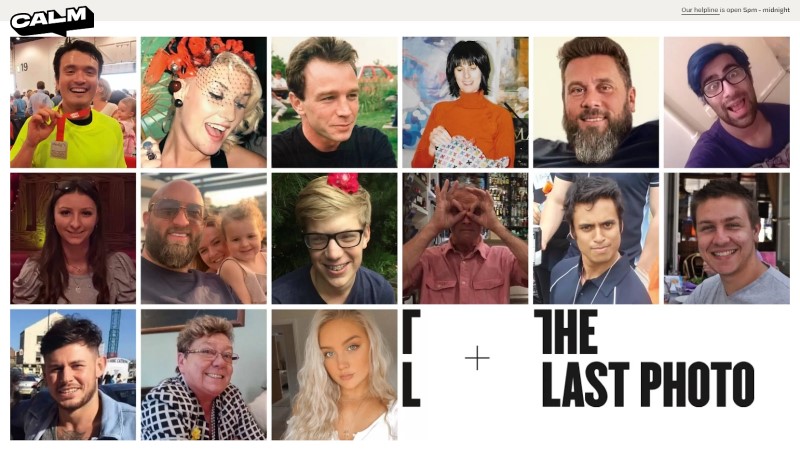
This campaign is certain to have made a lot of people reconsider their perspective on what depression and death by suicide looks like, and I like to think it sparked conversations that saved and improved lives – which is better than any KPI I’ve ever worked with.
Relevancy is probably more important for Charities doing Digital PR than most other industries. Given their often limited budgets, it’s vital that all messaging leaves the audience clear, without question, what it is you stand for, who you want to help, how you want to help them and what your values are. So, all campaigns need to be not just newsworthy, but also tightly aligned to brand – don’t ever veer far from the core issue you’re representing.
Shared by Head of Digital PR at Honcho Lou Ali
The Anthony Nolan Supporter Awards via Georgina Radford
The Anthony Nolan Supporter Awards (ANSAs) is first and foremost a celebration of the incredible contributions of various individuals to the charity, serving as a way to give back and honour their dedication. However, the ANSAs also prove each year to be a fantastic source of media coverage, in turn boosting brand awareness and building SEO value through organic backlinks.
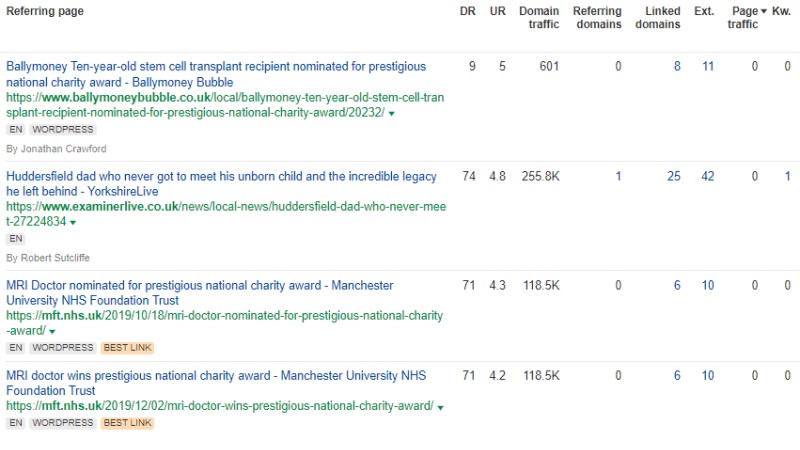
From a PR perspective, there are numerous reasons why this campaign works well; not only is it a heartwarming human-interest story that resonates with the general public, but the broad appeal of the topic means there are also diverse coverage opportunities, from national publications to regionals and business trade sites.
In many ways, there is no difference between conducting digital PR for charities; PRs will still be working to improve brand awareness and engagement, perfect their messaging and secure backlinks to improve SEO, just as one might with any other business.
However, the crucial difference is intention. These brands aren’t trying to sell a product or service, or at least not in the traditional sense. Instead, they are driven by a mission to create social impact, raise awareness for a cause and mobilise support and resources, usually in the form of donations.
It’s this intention that shapes the strategy and execution of digital PR campaigns. Charities need a clear vision of their campaign goals and the KPIs that will define success, as traditional PR metrics may not align with the campaign’s intentions.
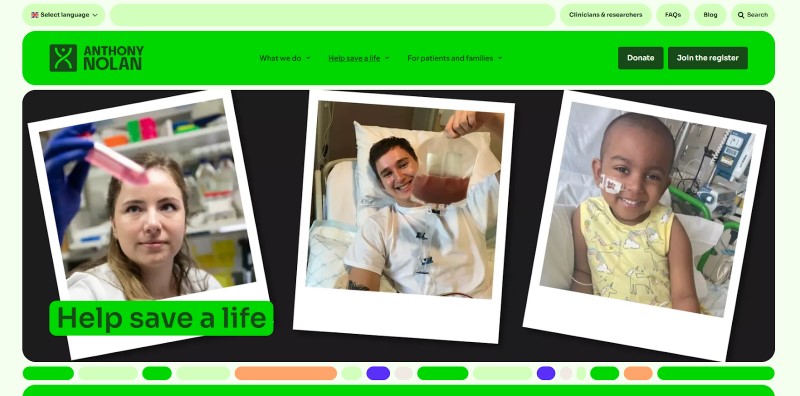
Charities should also keep in mind that they are in the coveted position of driving real-world impact through their PR efforts. Purpose-driven messaging that strikes the right tone with the public is therefore crucial. This messaging should be authentic, compelling and emotionally resonant to communicate the importance of their cause, build trust and ultimately inspire action among supporters.
Shared by Screaming Frog Digital PR Manager Georgina Radford
Final Thoughts – And What Are Your Favourite Charity Campaigns?
Hopefully by now you will have seen the incredible power and value that digital PR campaigns, if done in the right way, could have on your charity or business.
If your charity, NGO or business is interested in exploring the opportunities that digital PR can provide, I’ve listed a few general useful resources below to carry on with your journey – note that these are general guides to digital PR and aren’t necessarily charity-specific:

Leave a Reply